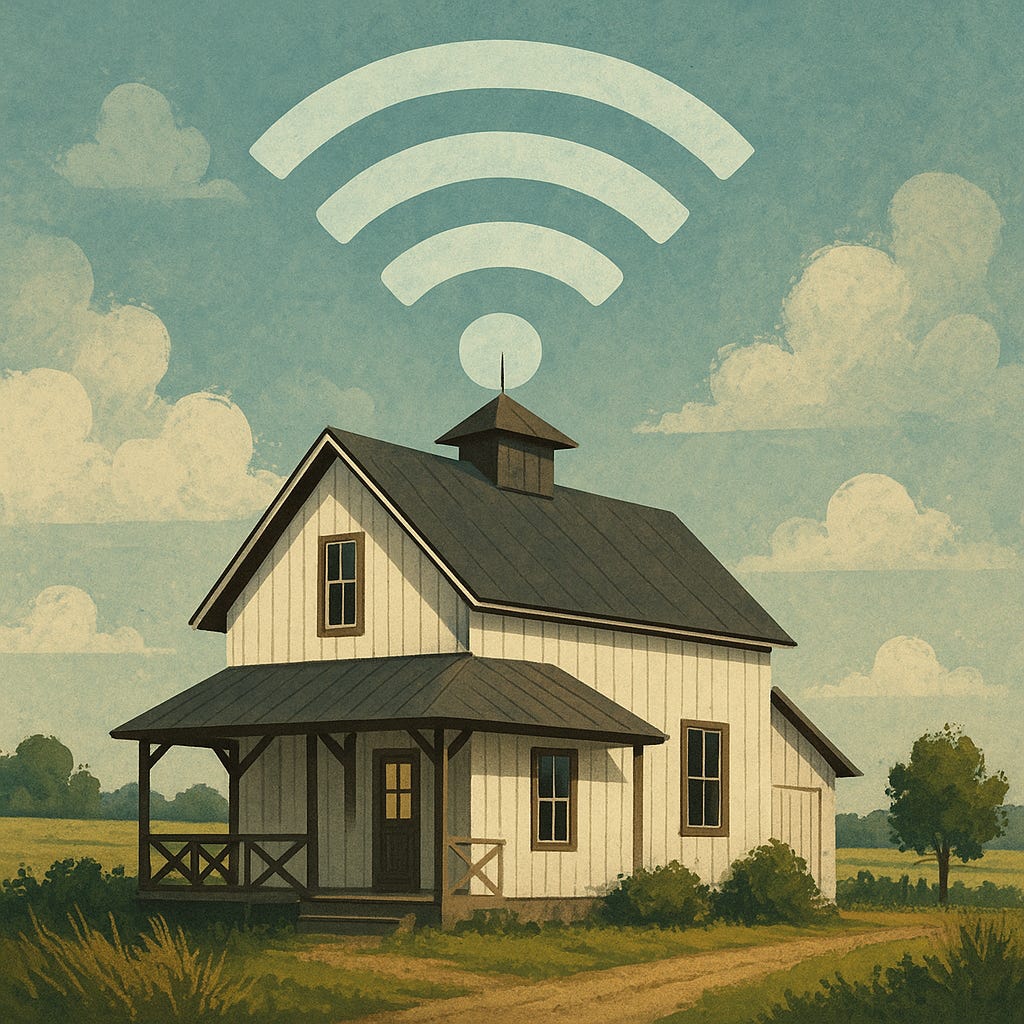My grandfather was a primary care physician in rural east Tennessee. He was on the school board, the board of the local bank, the hospital board, and pretty much any board in town. It was the kind of place where if something needed doing, someone like him just did it. Did I mention it was a very small rural town?
There’s something we forget, or choose to ignore, in every national mental health conversation: where you live matters. And not in the abstract, "community is important" kind of way. I mean literally where you live, right down to the zip code, the miles between houses, the nearest bus stop, the politics at the school board meeting. Geography isn’t just background. For LGBTQ+ young people, it’s a gatekeeper to survival.
A new report from Hopelab and Born This Way Foundation, Exploring Pride and Support of LGBTQ+ Young People in Rural Communities, makes this crystal clear. Using data from over 1,200 LGBTQ+ youth, it breaks down what life looks like for young people growing up in rural America, and how far that reality can be from what most national frameworks assume.
The findings are sobering. And they should be.
Fewer supports. Higher risks.
Only 13 percent of rural LGBTQ+ youth say their broader communities are supportive of LGBTQ+ people. Just 28 percent feel supported at school. Less than half feel supported by the people they live with. These numbers were too low. Disturbingly low.
And it shows in mental health outcomes. Over half (57 percent) of rural LGBTQ+ youth meet the threshold for depression, compared to 45 percent of those in more populated areas. They're also less likely to report "flourishing," which is a term researchers use to capture well-being through meaning, optimism, and connection.
What makes it worse is how invisible these kids often are in the national narrative. We talk about LGBTQ+ youth and mental health like it’s one universal story. It’s not. You can’t airlift a program that worked in San Francisco and expect it to land in rural Kentucky without adjusting for context, for culture, infrastructure, and trust. We’ve tried things like this before. They fell flat.
Online spaces are a lifeline — but they’re not enough.
Despite limited internet access, rural LGBTQ+ youth are more likely than their urban peers to give and receive support online. They’re not just passive users of these tools, they’re the ones keeping the lights on for each other.
That’s powerful. But it’s also a warning. Digital communities are filling in for the supports that don’t exist locally. They’re doing triage. And while online affirmation is crucial, it shouldn’t have to be a substitute for a safe home or community.
One participant put it bluntly:
“If the people that you live with don’t support you at all... you’re gonna think that everyone now and in the future is also not gonna really support you.”
Another, a teen in the South, said that finding people online “saved my life.”
That’s the kind of sentence that should stop us cold. If we’re not where youth actually are, what are we even doing?
And now, we are watching lifelines disappear.
This week, the federal government ended the contract that funded the 988 mental health crisis line’s LGBTQ+ support services. It was the only dedicated national crisis option staffed by counselors trained to support LGBTQ+ people. Over 1,000 calls, texts, and chats came in daily. Almost 1.4 million since the line started.
Losing it won’t affect everyone equally. It will hit rural LGBTQ+ youth the hardest, especially those with no therapist nearby, no affirming adult at home, and nowhere else to turn. In policy terms, it’s a cut. In human terms, it’s abandonment, plain and simple.
Pride doesn’t cancel out pain.
Here’s something I found super striking: Even with all of this, the isolation, the rejection, the need to hide, levels of LGBTQ+ pride among rural youth remain high. Just as high, in fact, as their suburban and urban peers.
It’s a testament to their resilience. But let’s not romanticize it. Pride in identity does not erase the damage of living in a place where being yourself is risky. Internal strength matters, but it shouldn’t have to be the only line of defense.
One young person described the contradiction this way:
“Sometimes [pride] is in you, but you can’t show it because of your environment.”
It’s a brutal reality for many where pride is buried under fear.
This isn’t just a rural story.
If a young person in a rural area can only find support online and none from their school, neighbors, or even family, that’s a systems failure. It means we’ve built programs, policies, and funding mechanisms that assume “LGBTQ+ support” looks the same everywhere when it clearly doesn’t.
We need policies that actually account for rural infrastructure. We need mental health professionals trained to serve LGBTQ+ youth who might live 40 miles from the nearest clinic or therapist. We need schools that understand how outing a student in a small town can mean social death or worse.
And we need to stop pretending you can fix this with another resource page or a rainbow flag.
What now?
The young people in this study weren’t just subjects, they helped design the survey and interpret the data. I love that. They told us all what they need: kindness, affirmation, connection, and safety. I don’t think that’s too much to ask. And it shouldn’t be harder to access based on where you live.
We have the data. We have the stories. Now the question is whether we have the will.






